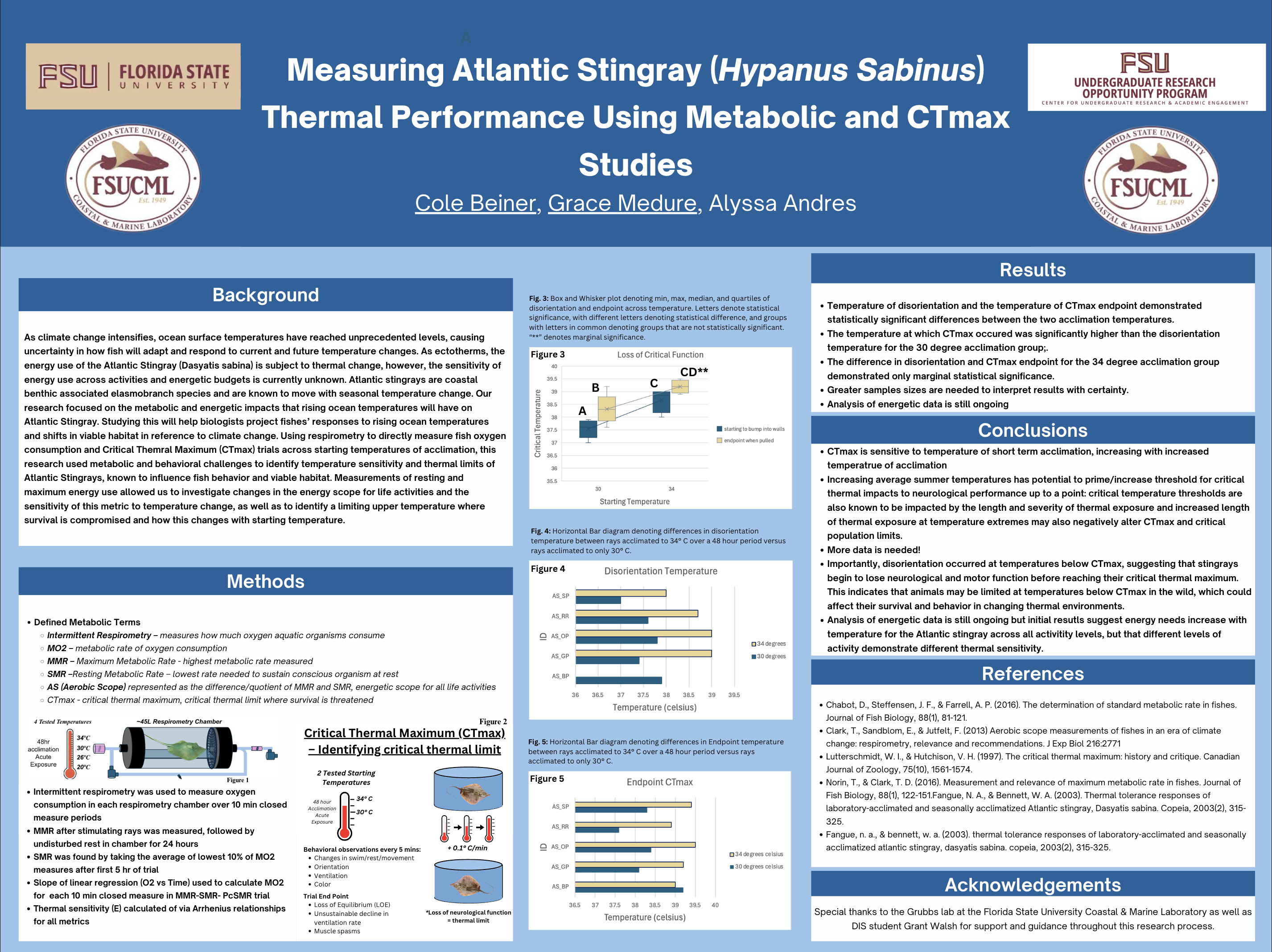Research Symposium
25th annual Undergraduate Research Symposium, April 1, 2025
Cole Beiner Poster Session 3: 1:45 pm - 2:45 pm/ Poster #99

BIO
Student in the Florida State University Honors Program majoring in Environmental Science & Policy with a strong background in environmental research — set to graduate in May 2028. At Florida State University, my education has been enhanced by my position as a Member at Large in the Freshman Class Council, and as a research apprentice through the Undergraduate Research Opportunity Program. I hope to pursue opportunities that enable me to utilize my leadership, data analysis, and research skills to contribute to my holistic understanding of environmental science.
Measuring Atlantic Stingray (Hypanus Sabinus) Thermal Performance Using Metabolic and CTmax Studies
Authors: Cole Beiner, Dr. Alyssa AndresStudent Major: Environmental Science & Policy, Pre-STEM Entrepreneurship
Mentor: Dr. Alyssa Andres
Mentor's Department: Coastal & Marine Laboratory Mentor's College: Postdoctoral Researcher Co-Presenters: Grace Medure
Abstract
The Atlantic Stingray is a coastal benthic elasmobranch species found in estuarine and marine habitats, where it experiences seasonal temperature changes. Understanding how these species respond to warming ocean conditions is crucial for predicting future shifts in their movement, habitat use, and physiological limits. Our research focuses on the metabolic and energetic impacts that rising ocean temperatures will have on Atlantic Stingray (Hypanus sabinus). Studying this will help biologists project fishes’ responses to rising ocean temperatures and shifts in viable habitats in reference to climate change. Using respirometry to directly measure fish oxygen consumption and Critical Thermal Maximum (CTmax) trials across starting temperatures of acclimation, this research used metabolic and behavioral challenges to identify temperature sensitivity and thermal limits of Atlantic Stingrays, known to influence fish behavior and viable habitat. We found that CTmax is sensitive to the temperature of acclimation; the rays typically reached a point of disorientation at 37.8 and 38.6 degrees Celsius and a critical thermal maximum of 38.5 and 39.5 degrees Celsius when acclimated to water at 30 & 34 degrees Celsius. We additionally found that all metabolic rates increase with temperature with different levels of temperature sensitivity leading to changes in aerobic scope as temperatures rise. Additionally, our experimental observations found that while the Atlantic Stingray may be tolerant of high temperatures, rising average temperatures and the increasing presence of marine heatwaves may lead to changes in population energy budgets, movement, viable habitat, and habitat use.
Keywords: Thermal Physiology, Marine Biology, Climate Change


